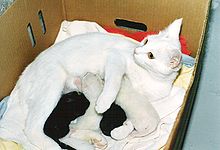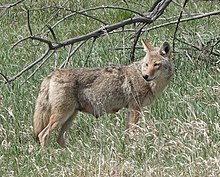
Back رضاعة Arabic Laktasiya Azerbaijani Лактацыя Byelorussian Ляктацыя BE-X-OLD Лактация Bulgarian Laktace Czech Laktation German Lactancia Spanish Lactation French Lachtadh Irish


Lactation describes the secretion of milk from the mammary glands and the period of time that a mother lactates to feed her young. The process naturally occurs with all sexually mature female mammals, although it may predate mammals.[1] The process of feeding milk in all female creatures is called nursing, and in humans it is also called breastfeeding. Newborn infants often produce some milk from their own breast tissue, known colloquially as witch's milk.
In most species, lactation is a sign that the female has been pregnant at some point in her life, although in humans and goats, it can happen without pregnancy.[2][3] Nearly every species of mammal has teats; except for monotremes, egg-laying mammals, which instead release milk through ducts in the abdomen. In only a handful of species of mammals, certain bat species, is milk production a normal male function.
Galactopoiesis is the maintenance of milk production. This stage requires prolactin. Oxytocin is critical for the milk let-down reflex in response to suckling. Galactorrhea is milk production unrelated to nursing. It can occur in males and females of many mammal species as result of hormonal imbalances such as hyperprolactinaemia.
- ^ Capuco AV, Akers RM (2009). "The origin and evolution of lactation". Journal of Biology. 8 (4): 37. doi:10.1186/jbiol139. PMC 2688910. PMID 19439024.
- ^ "Lactating Without Pregnancy". sites.google.com. Archived from the original on 14 January 2021.[unreliable source?]
- ^ "Goats with Precocious Udder Syndrome". berryemporium.com. Archived from the original on January 14, 2021.